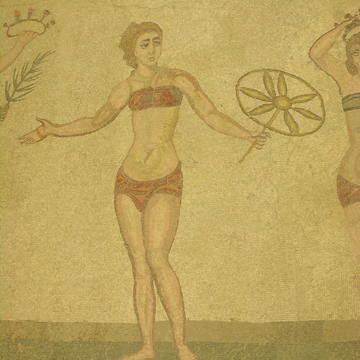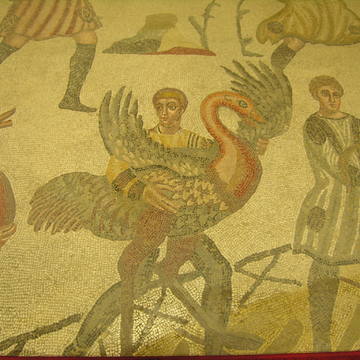The city of Piazza (as it was called before 1862) developed during the Norman domination in Sicily (11th century), when Lombards settled the central and eastern part of Sicily.
But the area had been inhabited since prehistoric times. The city flourished during Roman times, as shown by the notable mosaics at the patrician Villa Romana del Casale
The town is famous chiefly for its Roman mosaics in the Villa Romana del Casale, about 3 kilometres (2 miles) to the southwest. It has a range of significant architecture dating from medieval through the 18th century. The discovery and excavation of the well-preserved, highly refined mosaics has helped attract tourists.
The medieval history of the city is manifest in some of its houses, which show Norman or Gothic architecture.
Piazza Armerina is one of the so-called "Lombardic" communes of Sicily, as its dialect differs notably from that of the neighbouring region. This is due to the destruction of the old Piazza by king William I of Sicily, and the subsequent repopulation by William II (according to other scholars, during the slightly later age of Frederick II) with colonists coming from "Lombard" regions of northern Italy, especially from Monferrato and Piacenza.
Roman exploitation of the countryside is symbolized by the Villa Romana del Casale (in Sicily), the centre of the large estate upon which the rural economy of the Western Empire was based. The villa is one of the most luxurious of its kind. It is especially noteworthy for the richness and quality of the mosaics which decorate almost every room; they are the finest mosaics in situ anywhere in the Roman world.
The Villa del Casale at Piazza Armerina is the supreme example of a luxury Roman villa, which graphically illustrates the predominant social and economic structure of its age. The mosaics that decorate it are exceptional for their artistic quality and invention as well as their extent.

